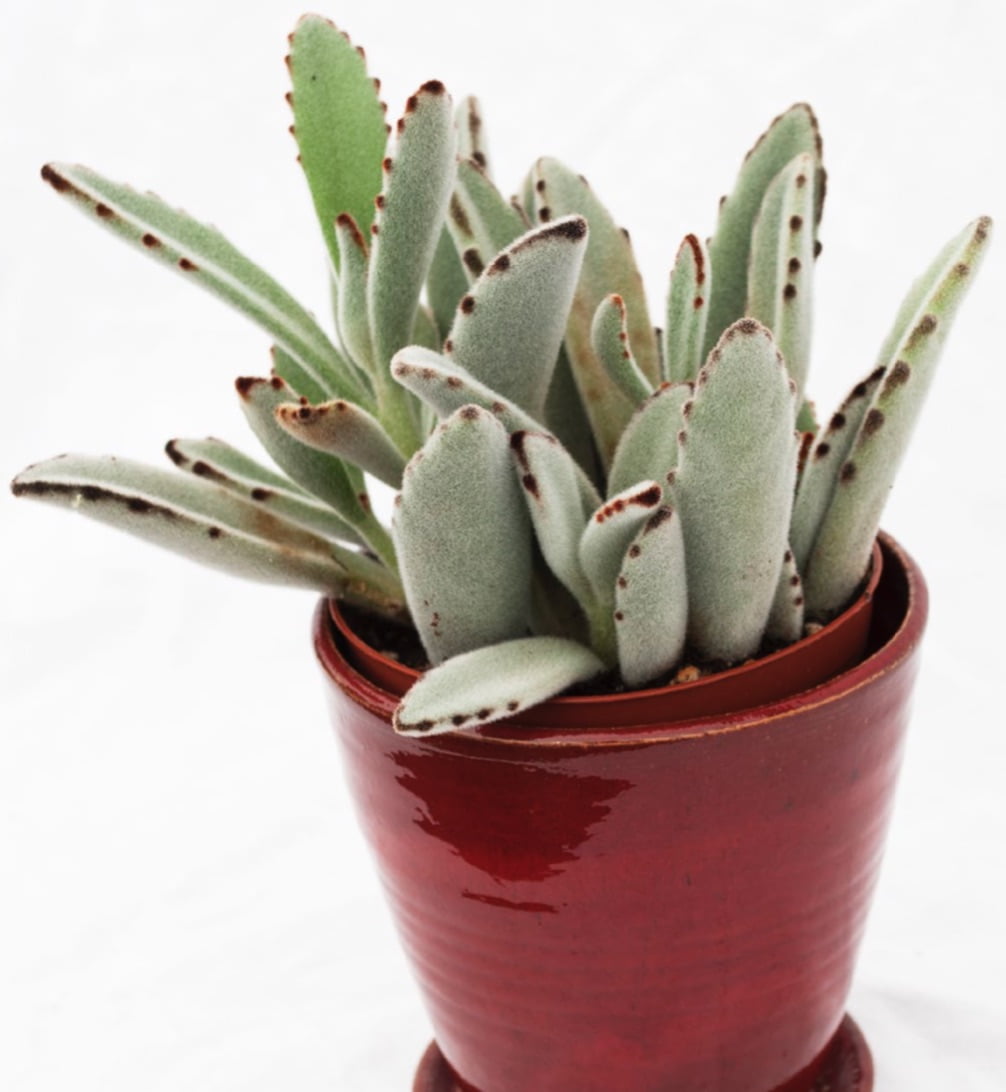[Ebook Việt Hoá] What's wrong with my houseplant (Có vấn đề gì với cây trong nhà của tôi?) - David Deardorff & Kathryn Wadsworth, Chi Kalanchoe
[Ebook Việt Hoá] What’s wrong with my houseplant?: Panda plant (Kalanchoe tomentosa)
- Biên tập: Dũng Cá Xinh
- Người dịch: Huyền Nguyễn
ENGLISH
Super easy to grow and tolerant of benign neglect, panda plant (Kalanchoe tomentosa) is among the most forgiving of all houseplants. It is a succulent, with thick, water-storing leaves, so it doesn’t need much water, and it’s very well adapted to the dry air of most homes. Panda plant gets 1 to 2 feet tall and has a stout stem with numerous side branches that give it a tree-like, almost bonsai character. Side branches tend to grow erect at their tips with dense clus- ters of vertical leaves, whereas leaves near the base of stems are perpendicular to the stems. The densely hairy leaves are oval to egg-shaped and 1 to 3 inches long. These furry, silvery-velvet leaves are as soft as kitten’s ears. With their dark rust-red edges, they are panda plant’s most dis- tinguishing feature and the primary reason to grow it in your home. The small, fuzzy, yellow- ish green, bell-shaped flowers are rarely pro- duced indoors.

Because it is closely related to kalanchoe and mother of thousands, panda plant is pre- sumed toxic to people and pets in all its parts, including the water in a vase of its flowers. Those plants contain bufadienolides, chemi- cals that react with blood sugar to form car- diac glycosides, which in turn interfere with the heart muscle’s electrolyte balance, causing nau- sea, drooling, vomiting, dilated pupils, tremors, seizures, abnormal heart rhythm and rate, and life-threateningly high potassium levels. If any- one ingests this plant, call your local emergency hotline, poison control center, or vet.
OPTIMUM HOUSEHOLD ENVIRONMENT
Read the Introduction for the specifics of each recommendation.
HIGH LIGHT.
Give this plant full sun from a south window, or really bright filtered light. A half-day of sun from an east or west window will also work well. Be careful to acclimatize the plant to full sun slowly.
MODERATE TEMPERATURE.
Daytime 70 to 80°F, nighttime 60 to 70°F.
MODERATE WATER.
Water whenever the top of the potting medium becomes dry to a depth of 1 inch.
HUMIDITY.
Panda plant does not need supple- mental humidity.
POTTING MEDIUM.
Use any good organic, cactus and succulent potting soil that incorporates organic fertilizer, mycorrhizal fungi, and other beneficial microbes.
FERTILIZER.
Use any balanced liquid organic fertilizer. Apply at half-strength once a month through the growing season. Don’t feed the plant in the winter.
POTTING.
When this slow-growing plant needs up-potting, shift it to a container with a diame- ter 2 inches larger than the current pot.
PROPAGATION.
Panda plant is easy to propagate from stem tip cuttings and leaf cuttings.
COMMON PROBLEMS
Watch for sunburn (page 256), mealybugs (page 262), and root rot (page 272).
Tiếng Việt
Bởi siêu dễ trồng và chịu được khô hạn, Sen Đá Nhung Viền Đen (Kalanchoe tomentosa) là một trong những loại cây được lựa chọn nhiều nhất trong số các loại cây trồng trong nhà. Đây là loại cây mọng nước có lá dày trữ nước nên không cần tưới nhiều, cây thích nghi rất tốt với không khí khô trong nhà. Cây Sen Đá Nhung Viền Đen (Panda plant) cao từ 1 đến 2 feet và có thân mập mạp với nhiều nhánh phụ tạo cho nó một vẻ đẹp giống cây cảnh. Các cành bên có xu hướng mọc thẳng ở đầu với các cụm lá thẳng đứng dày đặc, trong khi các lá gần gốc lại vuông góc với thân cây. Các lá rậm lông có hình bầu dục đến hình trứng và dài từ 1 đến 3 inch. Những chiếc lá có lông như nhung bạc, mềm mại như tai mèo con. Các cạnh rỉ sét sẫm màu là đặc điểm nổi bật nhất của cây Sen Đá Nhung Viền Đen (Panda plant) và là lý do chính để người trồng lựa chọn chúng. Những bông hoa hình chuông nhỏ, mờ có màu xanh lục hơi vàng hiếm khi xuất hiện khi cây được trồng trong nhà.

MÔI TRƯỜNG TỐI ƯU HÓA
ÁNH SÁNG CAO
Cung cấp cho cây đầy đủ ánh nắng mặt trời từ cửa sổ hướng Nam hoặc ánh sáng lọc sáng. Một nửa ngày mặt trời từ cửa sổ phía đông hoặc phía tây cũng sẽ giúp cây sinh trưởng tốt. Hãy dần dần để cây thích nghi với ánh nắng mặt trời trực tiếp.
![[Ebook Việt Hoá] What’s wrong with my houseplant?: Panda plant (Kalanchoe tomentosa) [Ebook Việt Hoá] What’s wrong with my houseplant?: Panda plant (Kalanchoe tomentosa)](https://vn1.vdrive.vn/codai.net/2021/03/134-kalanchoe-tomentosa.jpg)


